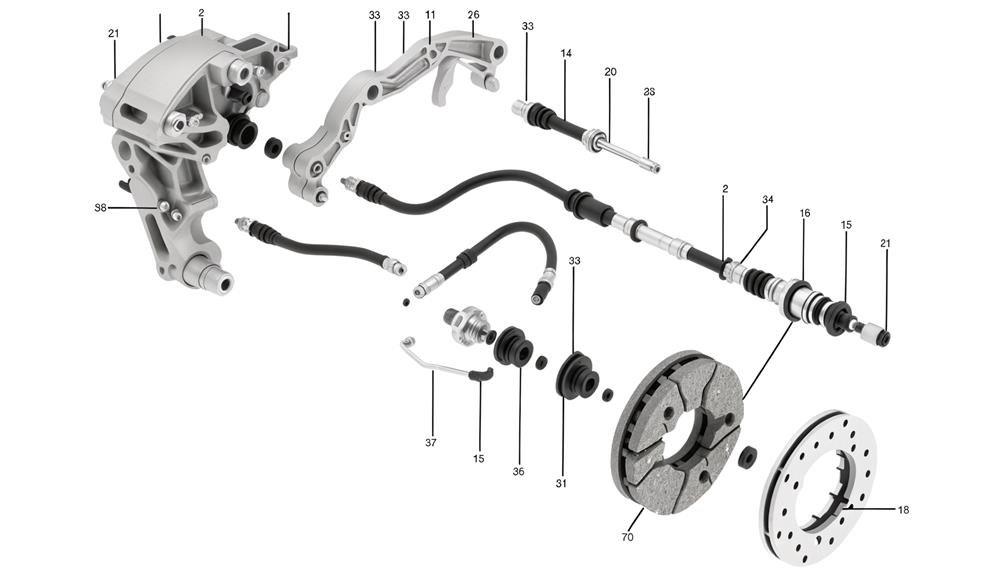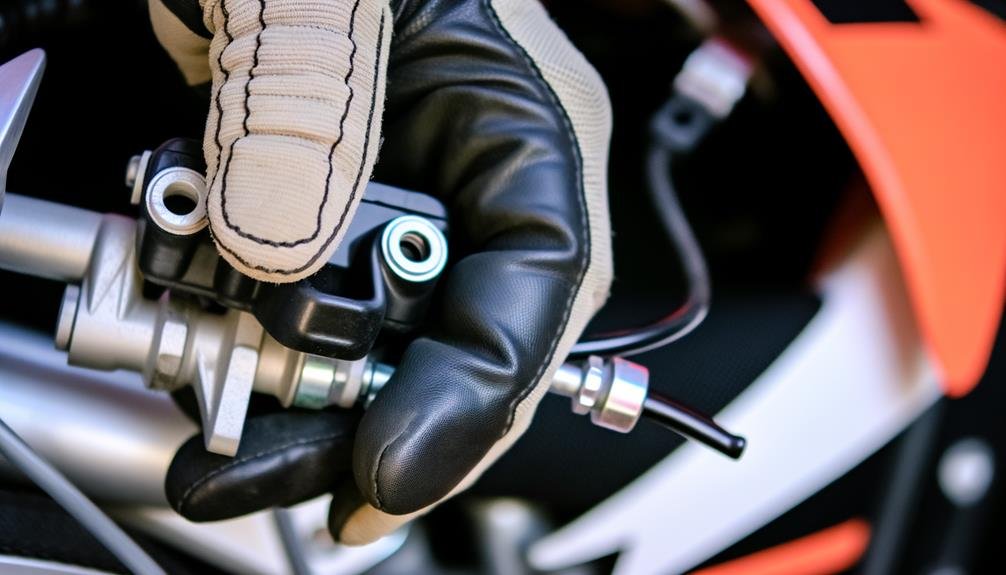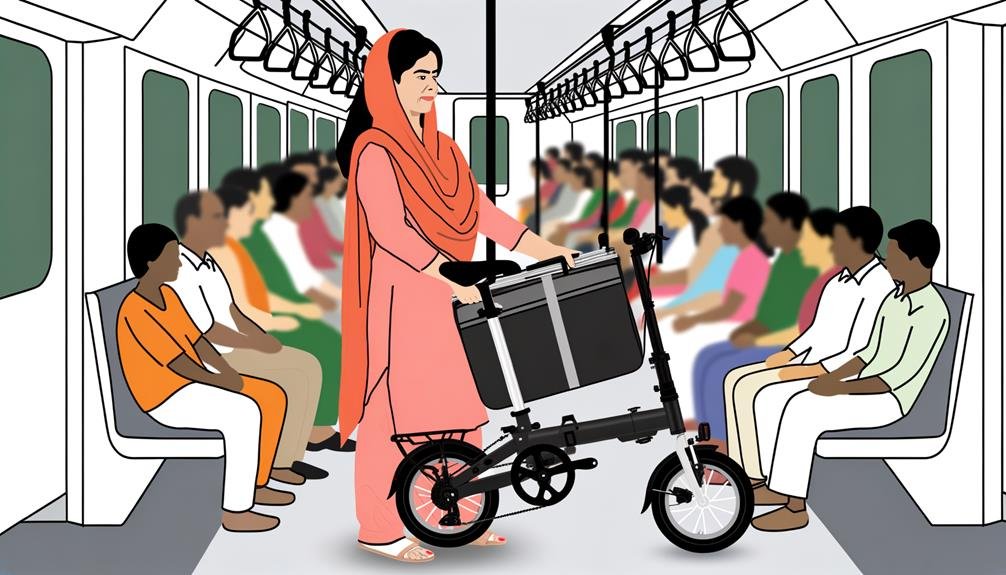Charles Miller is a veteran bike enthusiast with over 12 years of experience dealing with bikes as a mechanic. Despite immense love and expertise for...
Bleeding brakes on dirt bikes can be a bit daunting for beginners, but it's a crucial skill for every rider to master. We've all been there, out on the trail, when suddenly our brakes start feeling squishy or unresponsive. It's not just a nuisance, it's a safety hazard that could lead to serious accidents.
How do we tackle this issue, you ask? Well, it involves a simple process known as 'bleeding the brakes'. Stay tuned as we dive deeper into this topic, guiding you through the necessary steps, tips, and tricks to effectively bleed your dirt bike brakes.
Key Takeaways
- Gathering the correct type of brake fluid and optional tools like a water bottle and clear vent line is essential for the bleeding process.
- Understanding the brake system and maintenance, including the role of brake pads, rotors, brake lines, and the master cylinder, is crucial for effective bleeding.
- Proper preparation of the bike, including stabilizing it, filling the brake reservoir, and tightening the bleeder nut, ensures a smooth and efficient bleeding process.
- Regular brake maintenance, inspection of brake pad thickness and rotor condition, and testing the brakes for firm feel are vital for optimal performance and long-term durability.
Gather Your Necessary Tools
Before we start the process of bleeding your dirt bike's brakes, let's gather all the necessary tools, making sure we've the correct type of brake fluid, ideally DOT 3 or DOT 4, for your bike's master cylinder. Getting the right brake fluid is crucial. It's not just about having any fluid; it's about having the right one for your bike. It's the little details that make the difference in our collective biking experience, and we're all about getting those right.
Now, onto the other things you need. Consider optional tools like a water bottle and a clear vent line. These aren't strictly necessary, but they can make the bleeding process easier and more efficient. The water bottle can be used for flushing the system, while the clear vent line provides visibility of any air bubbles during the bleeding process. This way, we can make sure we're getting all that unwanted air out of the system.
To cap it all off, we'll attach the vent line to the bleeder. This isn't a must-do, but it's another step that can make the process smoother. It's all about making this as straightforward and stress-free as we can, so we can get back out there on the trails.
Safety Precautions to Consider
As we gear up to bleed our dirt bike's brakes, let's not forget the critical safety precautions that shield us from potential harm and prevent damage to our beloved bikes. Before we go ahead, here are some safety precautions to consider:
- Always wear protective gear. It's important to don gloves and goggles to protect ourselves from brake fluid and other debris. This way, we ensure our safety as we toil away.
- Stabilize your bike. It's crucial to place our bikes on a sturdy stand or jack. This prevents any unfortunate accidents from the bike tipping during the process.
- Avoid brake fluid spills. Brake fluid can wreak havoc on our bikes' paintwork. We need to be careful not to spill any during the bleeding process.
- Dispose of old brake fluid responsibly. Let's remember that used brake fluid is harmful to the environment. Using a catch pan or container for collection and proper disposal is a must.
We all love our dirt bikes, and we're in this together. Let's keep them, and ourselves, safe and sound, ensuring we can enjoy the ride for many years to come.
Understanding Your Dirt Bike's Brake System

To fully understand the process of bleeding dirt bike brakes, we first need to get a grip on the brake system itself. It's essential to know the key components, their functionality, and how regular maintenance can prevent brake problems in the future.
Brake System Components
In the realm of dirt biking, understanding the integral components of your brake system – such as brake pads, rotors, and brake lines – is essential for optimal performance and safety. Let's dive a little bit into these crucial brake system components.
- Brake Pads: They apply pressure and friction to the rotors, slowing down your dirt bike.
- Rotors: They're directly connected to the wheel. When the brake pads squeeze the rotors, your bike slows down.
- Brake Lines: They carry brake fluid from the master cylinder to the calipers, enabling the brake pads to function.
- Master Cylinder: It controls the amount of brake fluid sent through the lines.
Brake System Functionality
Before we delve into the steps of bleeding your dirt bike's brakes, it's crucial we first understand why brakes mightn't be bleeding, the necessary tools and brake fluid for the task, and the correct procedure to follow for effective brake bleeding.
Reasons for brake issues could be insufficient brake pad thickness or a punctured brake line. With the right tools, like DOT 3 or 4 brake fluid and optional equipment such as a water bottle and clear vent line, the task can be actually done.
It's also essential to know how to remove the brake master cylinder cap without damaging the rubber seal, and how to maintain the fluid level.
Now, let's move to the next one, the correct way to set up the bottle and bleeder.
Maintenance of Brake System
Regularly maintaining your dirt bike's brake system is vital, as it allows for safe and effective braking. We're here to guide you on how to bleed dirt bike brakes and ensure your rides are as safe as they're thrilling.
- Learn the common reasons why brakes may not bleed properly. Knowledge is power, and we're all about empowering our dirt bike community.
- Get familiar with the specific brake fluid and tools needed for maintenance of the brake system. You wouldn't cook without the right ingredients, right?
- Master the method for removing the brake master cylinder cap without causing damage. It's all in the technique, folks.
- Set up your bottle and bleeder correctly for an efficient bleeding process. Remember, efficiency is key to effective maintenance.
Your dirt bike deserves the best care, and together, we can make that happen.
Preparing Your Dirt Bike for Bleeding

To prepare your dirt bike for bleeding, we first need to squeeze the brake lever to create necessary pressure in the system. This pressure is vital for the bleeding process since it pushes out the trapped air bubbles. Now, I'm gonna tell you how we're gonna go about the rest of the preparation.
Stabilize your bike using a tripod; it's essential for safety and efficiency. Make sure the brake reservoir is filled with fluid; it's an important aspect to ensure proper brake operation.
Always check the brake fluid level. It should be above the minimum line mark. If it's not, top it up. Then, tighten the bleeder nut using an 8mm wrench. This prevents air from getting into the system.
Here's a simple table summarizing the steps:
| Step | Action |
|---|---|
| 1 | Squeeze the brake lever |
| 2 | Stabilize bike with tripod |
| 3 | Fill brake reservoir with fluid |
| 4 | Tighten the bleeder nut |
These steps may appear simple, but they're crucial. Remember, proper preparation is the key to success. Do it right, and you'll be back on the dirt in no time, enjoying your smoothly running brakes.
Step-by-Step Bleeding Process
Now we're ready to get down to the nitty-gritty of the bleeding process.
First, we'll go over the tools you'll need to gather before starting.
Then, we'll walk you through the procedure step by step, ensuring your dirt bike brakes bleed successfully.
Gathering Necessary Tools
Before we start the bleeding process, let's gather all the necessary tools, including the correct brake fluid type, which could be DOT 3 or 4, and optionally a water bottle and a clear vent line for better visibility.
Here's what we're going to do next:
- Check the brake master cylinder for the required brake fluid type. It's usually right next to the handlebars.
- Safely remove the brake master cylinder cap, being careful not to damage the rubber seal.
- Set up the bottle and bleeder. Secure the bottle with tape and attach a clear vent line to the bleeder. This will help us see what's happening during the bleeding process.
- Finally, we're going to tell you how to bleed the brakes using an 8mm wrench on the bleeder screw.
And that's it, we're all set. Let's get to work.
The Bleeding Procedure
Let's dive into the step-by-step bleeding procedure, aiming to ensure our dirt bike's brakes are in top-notch condition.
First, we're gonna pump the brake lever to create pressure.
Then, we'll attach a clear vent line to the bleeder for better visibility.
Ensuring the brake reservoir remains above the minimum line is crucial to prevent air from entering the system.
Using an 8mm wrench, I'm going to open the bleeder screw, carefully watching for fluid and air bubbles.
Remember, it's important to maintain the fluid level while doing this.
After bleeding, we'll test the brakes for functionality and ensure we dispose of any spilled brake fluid properly.
Let's get going and keep our dirt bike brakes in perfect working order!
Checking and Testing the Brakes

While maintaining your dirt bike, it's crucial to carefully inspect the brake pad thickness and the rotor for any signs of bends or damage. This is more than a routine check, it's about ensuring your safety every time you hit the dirt trail.
Here's a step-by-step guide on what to do when checking and testing the brakes:
- Look for any tears, cracks, or leaks in the brake lines. This can cause the brake fluid to leak and affect the bike's braking power.
- Check the brake master cylinder. Make sure it's filled with the correct type of brake fluid. The incorrect fluid can cause significant damage.
- During the process of how to bleed dirt bike brakes, use a clear vent line to observe bubbles. This helps in identifying if there's air in the brake lines.
- Finally, test the brakes after bleeding. A firm feel when the brake lever is pressed indicates the brakes are working properly.
Maintaining Your Bike's Brake System
Having covered the process of checking and testing your brakes, we now move on to the crucial aspect of maintaining your bike's brake system to ensure optimal performance and long-term durability. This includes regular checks on brake pad thickness and the use of correct type of brake fluid, such as dot three or dot four.
It's important to have the necessary tools for the bleeding process and to handle them with care. When maintaining your bike's brake system, carefully remove the brake master cylinder cap to avoid damaging the rubber seal and ensure the fluid level is maintained.
Securely setting up the bottle and bleeder with a clear vent line is vital for visibility during the bleeding process. To bleed your dirt bike brakes, use an 8mm wrench on the bleeder screw while watching for fluid and air bubbles. It's a process that may need repeating, but it's a key step in maintaining your bike's brake system.
Frequently Asked Questions
How Do You Get Air Out of Dirt Bike Brakes?
We're tackling air bubbles in dirt bike brakes. They can impact braking power. Using the right brake fluid type is vital. We'll guide you through removing these pesky bubbles to get you back on track.
How Do You Bleed Bike Brakes by Yourself?
We're pros at DIY brake bleeding! Our top brake maintenance tips include using the right tools and fluids, being patient, and checking for air bubbles. With practice, you'll ace this task in no time.
How Do You Fix Spongy Brakes on a Dirt Bike?
We're tackling spongy brake issues on a dirt bike. It's crucial to maintain brakes regularly, as wear, bent rotors, or line leaks can cause sponginess. We'll address each potential cause in our guide.
How Do You Bleed Brakes Step by Step?
We're often asked about brake maintenance importance and the comparison of bleeding techniques. Essentially, we pump the brake lever, open the bleeder screw, observe for fluid and air bubbles, then repeat if necessary.
Conclusion
We hope you've found our guide on bleeding dirt bike brakes helpful. Remember, proper maintenance can prevent 20% of brake failures, so don't overlook this crucial task.
It might seem complex at first, but with practice, it becomes second nature. Keep your bike in top shape, and you'll not only have safer rides, but you'll also extend its lifespan.
Happy riding!

Charles Miller is a veteran bike enthusiast with over 12 years of experience dealing with bikes as a mechanic. Despite immense love and expertise for his Tacoma, he rides his Trek Ebike more. Anytime you meet him, you’ll either hear him talking about Bikes, or writing about all things bikes and cars on this blog.
More Posts


